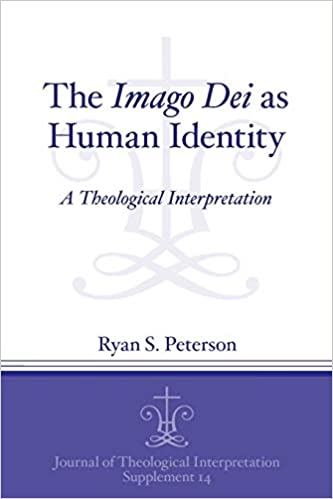
Take a long look at the photo. To whom is this woman praying? It is hard to tell, isn’t it? Suppose we watch her for a while. We may see her bow low to the floor. Her lips may move, though perhaps it is too low for us to hear the words proceeding from her. But then, she may not even be praying in a language we understand. Her ethnicity is ambiguous, but if we knew where she was from we may make assumptions about what faith she may belong to. Of course, those assumptions may be completely unfounded and erroneous.
What do people see when we pray? Our prayer is not for the eyes of others; we do not pray for the purpose of being seen, but our prayers are still a witness and testimony before a watching world—like Daniel, praying three times daily toward Jerusalem, lions be damned. We may pray at meals, even if eating at a restaurant, or at school or elsewhere in public. For those who are out of earshot who cannot hear “in Jesus name,” what must they think? Well, if we are dressed like westerners they may assume we are Christians. But what if we are of ambiguous ethnicity or origin? What is there to distinguish our prayer from those of Muslims or New Agers or the Bahá’í?
Now imagine that as you watch the woman above, she concludes her prayer by touching her fingers to her forehead, then to the center of her chest, and then to her shoulders, one after the other. Do you know who she is praying to now?
A few months ago, my wife and I attended a Sunday morning worship at Christ Church, Oxford Cathedral. The building was impressive, the choral and organ accompaniment for the service was beautiful, and the liturgy itself was familiar to this Theopolis veteran. But the Protestant is still strong with this one. When everyone else made the sign of the cross at specific points in the service, I sat immobile as a stone and felt myself switch into observation mode.
Now, when you’re participating in a worship service the last thing you want to do is go observer. That is the point at which your participation in worship ceases. Of course, some of us will not even go so far as to bow physically, rather taking the closing of eyes as a metonym for the bowing of the head. I knew one man who would call people to prayer with the words “bow your hearts with me now.” That struck me as odd, even then, before my liturgical studies binge. How does one bow their heart?
The first time I went down to Theopolis and took the knee for the benediction, James Jordan gave the blessing—sung—and made the sign of the cross to accompany the Trinitarian Name. That was a powerful moment, and remains so for me every time I participate in that liturgy (as I did just this past week). To be marked out by the cross of Jesus Christ is no insignificant gesture. The Protestant is still strong in us, however—we do not cross ourselves in the liturgy, preferring to defer that signing to the president (not that president).
So why the aversion? Why do we not cross ourselves? Are we afraid of being quite that embodied? Or is it simply the appearance of “looking Catholic” that we’re afraid of? Is making the sign of the cross in prayer just rote superstition? Can one do the action without thinking, or as a kind of charm? Of course that is possible. But I don’t think that needs to be the case.
What it certainly may be is uncomfortable, and perhaps that is not only my inner Protestant talking. Crossing oneself requires an externalization that is tactile to oneself and visible to a watching world. If I pray using the sign of the cross, it requires me to get out of my head and express faith through a physical gesture. It is an outward taking of God’s name, and that is a weighty thing.
Cyril of Jerusalem (4th c.) says this in regards to using the sign:
Let us, therefore, not be ashamed of the Cross of Christ; but though another hide it, do thou openly seal it upon thy forehead, that the devils may behold the royal sign and flee trembling far away. Make then this sign at eating and drinking, at sitting, at lying down, at rising up, at speaking, at walking: in a word, at every act.
Let us not then be ashamed to confess the Crucified. Be the Cross our seal made with boldness by our fingers on our brow, and on everything; over the bread we eat, and the cups we drink; in our comings in, and goings out; before our sleep, when we lie down and when we rise up; when we are in the way, and when we are still. Great is that preservative; it is without price, for the sake of the poor; without toil, for the sick; since also its grace is from God. It is the Sign of the faithful, and the dread of devils: for He triumphed over them in it, having made a shew of them openly; for when they see the Cross, they are reminded of the Crucified; they are afraid of Him, who bruised the heads of the dragon. Despise not the Seal, because of the freeness of the gift; out for this the rather honour thy Benefactor.
From “The Catechetical Lectures of S. Cyril, Archbishop of Jerusalem,” Lectures 10 & 13.
Notice here the echoes of the Shema of Israel (Deuteronomy 6:4-9). To Cyril, the cross is the new Shema. It is what we display when we go out and when we go in, when lie down and when we rise up. It is the cross of Jesus Christ that we bind to our hand and seal between our eyes.
Tertullian (3rd c.), likewise, refers to the sign of the cross among “ancient practices” handed down:
At every forward step and movement, at every going in and out, when we put on our clothes and shoes, when we bathe, when we sit at table, when we light the lamps, on couch, on a seat, in all the ordinary actions of daily life, we trace upon the forehead the sign.
“The Chaplet, or De Corona,” Chapter 3.
And I shall leave it at that for now. Am I comfortable doing this in public? No. But perhaps that means I should get over it and do it anyway. I will let that mull a bit. In the meantime, I will be practicing this in private devotion.












